
|
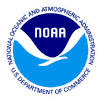
Cover/Title Page
Organizational Chart
Office of the Director
Office of Administration
and Research
Information and
Technology Services
Forecast Research
Division
Demonstration Division
Systems Development
Division
Aviation Division
Modernization Division
International Division
Publications
Acronyms and Terms
Figures Listing

Contact the Editor
Nita Fullerton
Web Design:
Will von Dauster
John Osborn
Best Viewed With
Internet Explorer
|

|
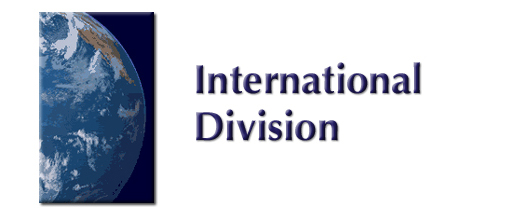 Dr. William B. Bendel, Chief
Dr. William B. Bendel, Chief
(Supervisory Meteorologist)
(303-497-6708)
Web Homepage: http://www-id.fsl.noaa.gov
Travis Andersen, Computer Programmer, 303-497-6710
Dr. Renate Brümmer, GLOBE Project Manager, 303-497-6718
Dr. Wayne Fischer, Physical Scientist, 303-497-6759
Sylvia N. Hasui, Secretary Office Automation, 303-497-6709
Vivian A. LeFebvre, System Administrator, 303-497-6721
Sean Madine, Lead Computer Programmer, 303-497-6769
Dr. Fanthune Moeng, Program Manager, 303-497-6065
Maureen Murray, Computer Graphics Expert, 303-497-6705
Robin Paschall, Computer Programmer, 303-497-6756
Evan Polster, Computer Programmer, 303-497-6778
John Pyle, Computer Specialist, 303-497-6724
William Ruddick, Student Computer Programmer, 303-497-6757
David Salisbury, Computer Programmer, 303-497-6753
Jean Tomkowicz, Computer Specialist, 303-497-6706
Michael Turpin, Lead Computer Programmer, 303-497-6756
Ning Wang, Computer Programmer, 303-497-6704
Ali Zimmerman, Computer Programmer, 303-497-6736
(The above roster, current when document is published, includes government,
cooperative agreement, and commercial affiliate staff.)
Address: NOAA Forecast Systems Laboratory – Mail Code: FS7
David Skaggs Research Center
325 Broadway
Boulder, Colorado 80305-3328
Objectives
The International Division's mission is to oversee internal development of systems intended primarily for global or international application and to facilitate
international cooperative agreements and technology transfer programs. Support is provided for the following major activities:
- The Global Learning and Observations to Benefit the Environment (GLOBE) Program – GLOBE is an international
environmental research program that links the efforts of students, teachers, and scientists. Students at schools around the world monitor a wide variety
of environmental parameters that are regularly posted on the GLOBE Website. This provides a unique global database of atmospheric, soil, biologic,
and hydrologic measurements available to researchers for a multitude of experiments.
- The Central Weather Bureau Technology Transfer Project – FSL's longest standing cooperative project is the Technology
Transfer Project at the Central Weather Bureau (CWB) of Taiwan. Since 1990, CWB-FSL activities have created joint mutual benefits, especially cooperation
in the areas of information systems, data assimilation and modeling, high-performance computing, and observing systems.
- The Korean Meteorological Administration (KMA) Project – The International Division is under agreement with the
Meteorological Research Institute (METRI) of the Korean Meteorological Administration (KMA) to design a nowcasting system based on FSL's
WFO-Advanced meteorological system, support startup and operation, and implement a training program for forecaster systems and operations staff.
- The FX-Net Program – FX-Net is designed as an inexpensive, PC workstation system for use in a variety of forecast, training,
education, and research applications not requiring the full capabilities of a WFO-Advanced type system.
- The Wavelet Data Compression Initiative – The Wavelet Data Compression initiative was established to further investigate
the possibility of using the technology for other meteorological datasets. Compared to imagery datasets, model datasets usually have higher numbers of
dimensions, but each dimension is of much smaller size. Therefore, special treatments are needed to exploit the correlation among all dimensions.
- The WorldWide Weather Workstation Initiative – The primary objective of the WorldWide Weather Workstation
(W4) initiative is to design a system that will meet the forecasting needs of developing nations worldwide. The advanced
workstation technology and varied datasets offered by the W4 system will help forecasters and emergency response managers
in developing countries to better deal with hazardous weather events.
The GLOBE Program
Renate Brümmer, Project Manager
Objectives
Established in 1994, GLOBE is implemented through bilateral agreements between the U.S. government and governments of partner nations.
The goals of this education and research program are to increase environmental awareness of people throughout the world, contribute a better
understanding of the earth, and help all students reach higher levels of achievement in science and mathematics. Under the guidance of their
teachers, students worldwide collect environmental data around their schools and post these findings on the Internet. GLOBE scientists design
protocols for measurements (Figure 64) that are simple enough for K-12 students to perform, and are also useful in scientific research. As scientists
respond to the major environmental issues of today, laboratory and classroom collaboration will help unravel how complex interconnected processes
affect the global environment. Years of student data collection have resulted in a significant contribution to science. GLOBE's unique global database
holds more than 8 million student measurements of atmospheric, soil, land cover, biological, and hydrological data, all of which are universally
accessible on the Web for research experiments. Since its initiation, the GLOBE Program has grown from 500 U.S. schools in 1995 to more than
12,000 participating GLOBE schools located in 97 partner countries today (Figure 65).
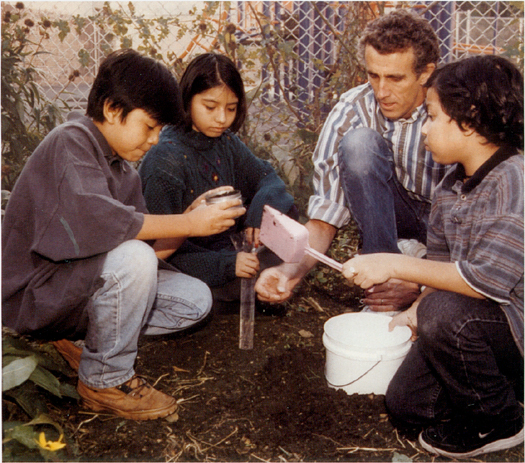
Figure 64. GLOBE students and their instructor taking
soil moisture measurements.
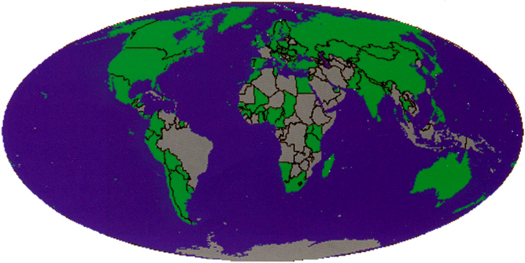
Figure 65. Website screen showing the location of GLOBE's 97 participating countries (in green).
The International Division is responsible for the development and maintenance of the main GLOBE Web server, real-time data acquisition, and the central
GLOBE database.
Accomplishments
During 2001, some major strides were made in creating a more accessible GLOBE Website. In collaboration with FSL's GLOBE systems partners at the
NASA Goddard Space Flight Center (GSFC), a mirror of the entire Website was established at both FSL and NASA/GSFC. Now when users request
http://www.globe.gov, they are sent to whichever mirror is "closest" in terms of network topology. This access
speedup was accomplished using a Cisco Systems routing-level device called the Distributed Director.
A totally separate system was set up as a training server which is used during GLOBE teacher training workshops and for students who wish to practice
the data entry process without actually sending "real" data to GLOBE. The establishment of such a server helps off-load the peaks in traffic normally seen
on the operational servers during workshops. The end result is that users of the operational Website and workshop participants see a more responsive Website.
GLOBE Website – Maintenance of the GLOBE Website requires daily effort as the content changes and new features are added.
Examples of changes made during the year include:
- Sight Search Tool – A site search tool that runs off FSL's own dedicated search engine was developed and deployed. The index pages
are updated (or the Website is "crawled") monthly since the contents of the site changes regularly.
- Improved Editing Capability – Editing of data has been made easier with a new two-step data entry process. GLOBE students specify on
the first page the date and time their observation was made, and then select the location where they made the observation. After filling in this form, the server
checks to see if any data has been reported yet for that day; if so, the subsequent form for filling in the core data is already partially completed, alleviating the
need to fill out a whole new form.
- New Data Entry Pages – The "Green-up" and "Green-down" protocol data entry pages were designed. Part of the phenology group of protocols
that help track the season length and give clues to global warming are referred to as Green-up (when trees and grasses start greening in the spring) and
Green-down (when trees and grasses start going into dormancy for the winter).
- Teacher Interface – Using data organized by SRI International, Menlo Park, California, the FSL GLOBE staff designed an interface that allows
teachers to track how well GLOBE tasks align with state education standards.
- Website Translations – A Web-based translation tool developed last year facilitated translation of Website pages to Russian, Arabic, and Dutch.
GLOBE "Admin" Website – A separate, nonpublic Website was developed early in the program that allows GLOBE Headquarters (HQ) staff in
Washington, D.C., and GLOBE partner groups to track school and teacher "administrative" information, such as contact information and GLOBE training
workshop attendance. This site is primarily a data-entry and report-based site, and is therefore nearly as complex as the public GLOBE Website. New interfaces
were created for HQ staff to manage joint information with partners. Additionally, an elaborate interface was set up for partners to identify their goals and
specify which schools they wish to target within the U.S. Many Web reports were also created which allow GLOBE staff to view school reporting patterns
(spatially, temporally, and quantitatively).
E-mail Data Entry – GLOBE e-mail data entry was redone, in which a separate system (from the Web-based data entry) was added to allow
schools to e-mail their data to GLOBE. Students and teachers can add site metadata, higher time resolution (down to the minute) on the report times, and
incorporate other protocols that were added in the last year (such as aerosols, ozone, and phenology). E-mail data entry was also enhanced to allow entry
of temperature logger data, automated to record current air temperature and soil temperature at several different depths every 15 minutes.
Positive Feedback – E-mails are now sent out to GLOBE schools the first time they report data to encourage continuation of data reporting. Subsequent
e-mails are sent as they reach "milestones" in terms of data reporting (250, 500, 1000 measurements, etc.) thanking them for their ongoing contribution to
the project. This helps to reinforce the idea that their data contribution is important to the community.
Using GLOBE Data – GLOBE scientists continue to help students and teachers improve the quality of their measurements, and as a result, more
scientists in various disciplines are using GLOBE data in their research. In 2001, University of Oklahoma researchers announced that GLOBE data from a
dozen countries are being used as the surface verification of remotely sensed global precipitation. GLOBE data are being incorporated into NOAA's Surface
Reference Data Center (SRDC), and an artificial neural network is being created at the University of Oklahoma's Environmental Verification and Analysis
Center (EVAC), which combines surface precipitation measurements (including GLOBE data) with water vapor estimates to create three-month precipitation
forecasts. Also, GLOBE soil profile characterization, land cover, climate, and GPS data were used together to parameterize the General Purpose Simulation
Model of the Atmosphere-Plant-Soil System (GAPS), which simulates and validates biophysical (atmospheric, plant, and soil) processes. Finally, researchers
at the University of Montana use GLOBE budburst phenology data to help select the optimal satellite compositing length, a technique that reduces atmospheric,
snow, and cloud contamination.
Projections
During 2002, the development tasks described above will continue commensurate with the evolution and growth of the GLOBE Program, as follows:
- Implement a system whereby the content of the GLOBE Website can be better controlled and maintained by the GLOBE Headquarters staff.
- Integrate newer Web technologies like Java servelets and Java Server Pages into the GLOBE system.
- Establish an Oracle database in a cluster configuration (many "lightweight" computers connected together).
- Move the FSL software and database files to a NetApp filer for improved file I/O response.
- Develop additional "administrative" Webpages that will allow GLOBE administrative staff (GLOBE Headquarters, trainers, country coordinators, etc.)
to more efficiently monitor the program.
- Help realize a bridge between the GLOBE database and various other related databases (SchoolNet, EPA, etc.) to help give a seamless view of many
separate datasets.
- Support the German GLOBE Program with the development of a truly operational GLOBE mirror site in Germany.
- Modify and maintain the mission-critical GLOBE database as more and more data from schools continue to be ingested.
Return to Top of International Division Section
Central Weather Bureau of Taiwan Technology Transfer
Fanthune Moeng, Project Manager
Objectives
FSL’s collaboration with the Central Weather Bureau (CWB) of Taiwan has been a 12-year success story in technology transfer of weather forecasting
applications. Since formal cooperative agreements were approved in June 1990, the CWB and FSL partnership has grown to include major initiatives
for improving CWB forecasting capabilities. Together they have developed a series of PC-based forecast workstations. The latest workstation is the
Weather Information and Nowcasting System (WINS), now operational at the CWB Forecast Center. The system was incorporated into the CWB
central facility, including data sources, communication, preprocessing, and product generation. WINS provides data and products to outside users,
including two universities, the Environmental Protection Agency (EPA), and the Taiwan Hydrology Bureau.
A strong forecasting infrastructure has been built at CWB during the last 11 years. Greater data collection, improved observation systems, high-performance
computing, and management capabilities combine to empower CWB in generating new and more useful forecast products. CWB is positioned to take
advantage of this infrastructure in new ways, with more powerful techniques under development within FSL and other NOAA laboratories. The effectiveness
of the CWB-FSL cooperation is based in large part on CWB’s willingness and ability to develop and use customized products with associated technical support.
FSL’s mandate to provide useful technologies fits with CWB’s real-world forecasting needs.
Accomplishments
In meeting the goals to improve forecasting capabilities at CWB during 2001, two major tasks were completed: the Local Analysis and Prediction System
(LAPS) was ported to CWB, and interaction continued on earlier cooperative projects.
Local Analysis and Prediction System – The latest LAPS software code was ported to the Central Weather Bureau successfully, with daily running
real-time data from CWB and using their Model NFS as background. These operational analysis products are available at the CWB’s workstation as well as
at the FSL’s Local Analysis and Prediction Branch Website. FSL staff improved the real-time LAPS running on the CWB systems. Software was added to
process observational data, including rawinsonde, ACARS (wind and temperature), mesonet, cloud drift wind, METAR, and synoptic observations. FSL is
working on the interface that links CWB radar (both narrowband low level reflectivity, ground suppression and wideband data) and GMS satellite data
(IR, visible, and cloud drift wind). FSL also improved the use of CWB surface pressure observations in the MSLP (mean sea-level pressure) analysis. Taiwan
LAPS was set up to output data in an Abigfile@ format that feeds into the WINS workstation. (Real-time output can also be seen on the Web.)
LAPS experts from FSL visited CWB to conduct training on the use of LAPS in operational forecasting, and to interact with the forecasters and researchers
there. A homepage was created to display the training sessions online, as well as some subjective evaluation of LAPS performance in Taiwan
(see http://laps.fsl.noaa.gov/szoke/taiwan/taiwan_lapstrainingpage.html).
Figure 66 shows a LAPS analysis of surface wind and mean sea-level pressure at 1800 UTC on 27 February 2002.
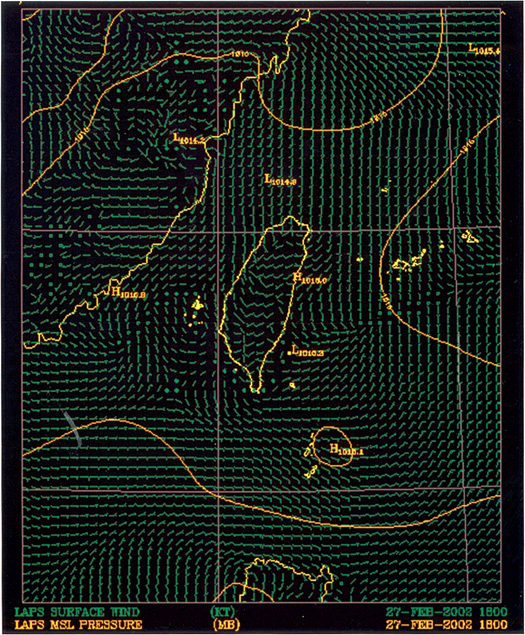
Figure 66. A LAPS analysis of surface wind and mean sea-level pressure at
1800 UTC 27 February 2002.
Continuing interaction on earlier cooperative projects – A CWB visiting scientist worked with the FX-Net team of the International Division for
five months in 2001 and received training on the FX-Net system.
A paper describing the status of the FSL-CWB project was presented at the annual American Meteorological Society Meeting's 18th International Conference
on Interactive Information and Processing Systems (IIPS) for Meteorology, Oceanography, and Hydrology.
Projections
During 2002, the FSL-CWB joint team will focus on the Local Analysis and Prediction System (LAPS), in its role of performing high-resolution analyses
and short-range forecasts of the weather using both locally and centrally available meteorological observations. FSL will continue working on the analysis
of remote sensing data and start the prediction part of the LAPS. FSL will apply the Hot Start technique using the balanced LAPS analysis on a forecast
model for the Taiwan LAPS domain. FSL also will provide training and technical support on LAPS runs at CWB. (Figure 67 shows a LAPS analysis of
radar reflectivity and surface wind during Typhoon Nari near Taiwan 1800 UTC 16 September 2001.)
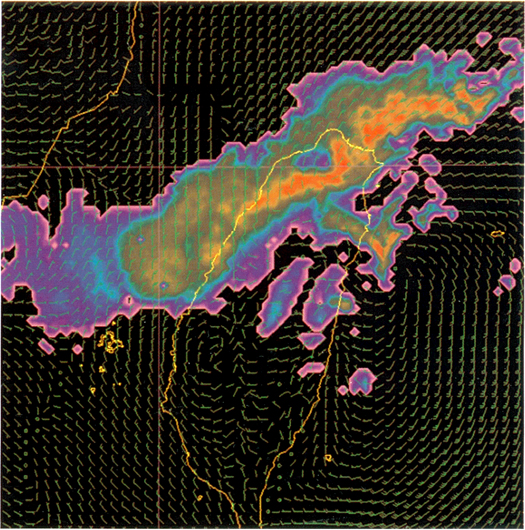
Figure 67. A LAPS analysis of radar reflectivity and surface wind during Typhoon Nari near Taiwan 1800 UTC 16 September 2001.
A new project will begin, the development of a Warning Decision Support System (WDSS) at the Central Weather Bureau. NOAA's National Severe
Storms Laboratory (NSSL) will lead this effort in conjunction with FSL's work. NSSL will focus on implementing an initial WDSS system consisting
of rapid prototyping and development of the Qflow system. The QPE-SUMS (Quantitative Precipitation Estimation and Segregation Using Multiple
Sensors) precipitation estimates will be input to the model, and basin hydrographs will be simulated. This test will identify real-time simulation issues
and operational needs. The real-time model testing, basin calibration, distributed flood level criteria development, and operational implementation will
follow over the next three years.
FSL and CWB will continue to enhance CWB’s current forecast workstation, WINS, to take advantage of AWIPS’ evolutionary path. FSL will support
upgrading WINS II with the WFO-Advanced 5.2 Linux build, and provide necessary training.
Return to Top of International Division Section
Korean Meteorological Administration
Forecaster's Analysis System
Fanthune Moeng, Project Manager
Objectives
The International Division is under agreement with the Meteorological Research Institute (METRI) of the Korean Meteorological Administration (KMA) to
design a nowcasting system based on FSL’s WFO-Advanced meteorological system. The development of an integrated workstation is the capstone of years
of modernization at the KMA to provide better weather information to its citizens. The cooperative effort will be carried out by researchers and engineers
from both organizations.
Accomplishments
In meeting the goals to improve forecasting capabilities at KMA during 2001, four major tasks were completed:
- Define specifications of KMA's nowcasting system, the Forecaster's Analysis System (FAS, see Figure 68)
- Develop the initial capability of the KMA nowcasting system
- Support real-time data retrieval for the KMA nowcasting system
- Support KMA training program.
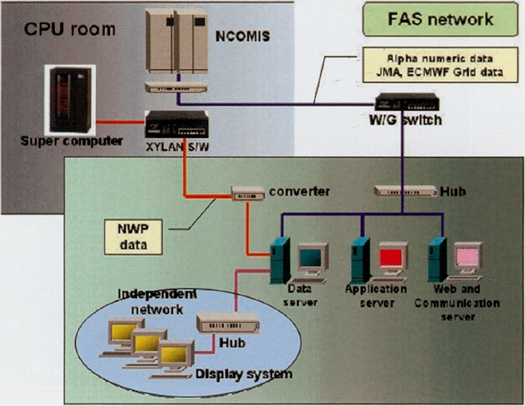
Figure 68. Schematic of the main frame of KMA's Forecaster's Analysis System.
Define Specifications of the KMA Nowcasting System – When studies during 2001 showed limited nowcasting capabilities at the KMA, the
FSL-KMA nowcasting project group decided to use the AWIPS D2D workstation architecture as a baseline for the AWIPS-like forecaster workstation,
FAS, at the KMA. As a prototype version of AWIPS 5.1 operated on the Linux platform, FAS consists of five Interactive Graphics Capability (IGC) panes.
The IGC is the data integration and visualization heart of D2D. FAS receives all input data, except for those from numerical models, through a New
Combined Meteorological Information System (NCOMIS), which is KMA's official communication. Numerical model outputs are directly transmitted
from KMA’s supercomputer. All data are decoded on the data server. The FSL-KMA joint team defined initial capabilities of the FAS and tested, debugged,
and implemented it on the KMATEST system first before transferring the software to the KMA site.
Develop the Initial Capability of the KMA Nowcasting System – The FSL-KMA nowcasting project group focused on customizing the D2D system
to adopt KMA's data source. The initial capability included decoding and display of KMA model data (global model–GDAPS T213, MM5, ARPS, METRI
model–MAS, ocean model–ReWAM, and ECWMF); SYNOP data; lightning; Buoy; AWS mesonetwork; RAOB soundings; satellite data (GMS and NOAA);
and up to seven KMA radars and two US Air Force radars. The FSL-KMA team also developed a new sampling method for buoy data, objective analysis
software for AWS data, and background map modification. Most work was performed by KMA visiting scientists under FSL’s guidance and support.
Support Real-Time Data Retrieval for the KMA Nowcasting System – The KMA FAS system received data from the NCOMIS data communications
server and model data from the KMA supercomputer. These data, decoded on a data server, create notification messages for the D2D display workstation.
The notification server will generate automatic update messages for each available product that is ready to display on the FAS.
Training for the KMA – FSL training staff provided two training sessions, each lasting about ten days. The focus of the first training session
at the KMA was on D2D meteorological training, emphasizing the uses of various fields and functions available on D2D for analyzing and forecasting
meteorological conditions. Five teams of five meteorologists (one chief meteorologist and four regional meteorologists) along with additional support
staff received training. Review cases were used from both FSL's D2D system and KMA's Forecaster's Analysis System (an adaptation of D2D). The D2D
review case was from the October 1997 blizzard, and the FAS cases were from January 2001 and February 2001. All three cases focused on cool-season
weather events, which were useful to review during the winter months in Korea. In another training session, two lectures were conducted with each
forecast team. The first lecture covered the D2D/FSL review cases, and the second covered the FAS/KMA cases. The first segment of the FSL/D2D case
presentation focused on the prestorm environment. Observations (e.g., satellite, rawinsonde winds, etc.) were compared to forecast model analyses in
order to determine whether the analyses adequately reflected the prestorm environment. The second part of the lecture focused on the forecast models,
model comparison, and forcing mechanisms, as well as the actual storm environment during the height of the storm over the Boulder forecast area. All
training objectives were met and the KMA trip provided an opportunity for FSL to become familiar with the meteorological and operational forecasting
environment in Korea. FSL presented a Certificate of Completion to 25 forecasters who received the training.
A paper describing the KMA Forecaster's Analysis System was presented at the American Meteorological Conference at the Interactive Symposium on
the Advanced Weather Interactive Processing System (AWIPS). Figure 68 shows the schematic diagram of FAS, and Figure 69 shows an example of
meteorological data display with various background maps around Korea.
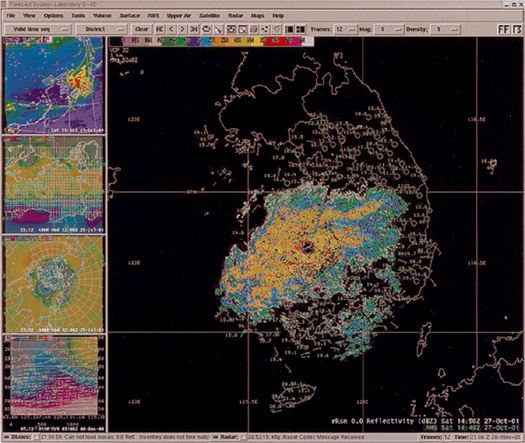
Figure 69. Example of meteorological data display with various meteorological data on background maps around Korea.
Projections
During 2002, the FSL/PG-NOW team will focus on four tasks: upgrade of the KMA nowcasting system, implementation of the Local Analysis and
Prediction System as part of the KMA nowcasting system, implementation of the MAPS Surface Analysis System (MSAS) quality control and monitoring
system, and forecaster training and risk reduction.
FSL will support the transition of the KMA nowcasting system into the operational system for all forecasters at KMA headquarters. The system performance
will be evaluated for future improvement after it is used routinely over a wide range of operational functions.
FSL will support KMA in implementation of the latest LAPS II as an integral part of the KMA nowcasting system, FAS. Forecasters can access LAPS products
through a single display system provided by the KMA nowcasting system. The emphasis of this task will be the ingest of satellite data into cloud and surface
analysis as part of the Water-In All Phases (WIAP) package, so LAPS can perform a "hot start" to produce useful forecasts in the first few hours.
FSL will support the KMA in implementing the MSAS as an integral part of the KMA nowcasting system. MSAS will be configured and tested for KMA’s
Automatic Weather Stations (AWS) system, and for models using saved data and display capability on the KMA test system at FSL. FSL will provide MSAS
software and documentation as well as any future update information to KMA staff.
FSL will continue to provide training of KMA forecasters on the use of the nowcasting system including LAPS II, and MSAS quality control. FSL training
staff will work closely with KMA forecasters in developing their workstation skills and their understanding of workstation use during various meteorological
events. In particular, case studies will be reviewed in order to determine which meteorological fields enhance forecaster understanding for nowcasting and
forecast purposes.
Return to International Division Section
FX-Net Program
Renate Brümmer, Project Manager
Objectives
The FX-Net program was established to develop a network-based meteorological workstation that provides access to the basic display capability of an
AWIPS workstation via the Internet. The design goal was to offer an inexpensive PC workstation system for use in a variety of forecast, training, education,
and research applications not requiring full capabilities of a WFO-Advanced type system. Although designed primarily for Internet use, FX-Net will also
accommodate local network, dial-up, and dedicated line use. The system consists of an AWIPS data server, an FX-Net server, and a PC client. The FX-Net
server is a modified AWIPS workstation. The server is locally mounted next to the AWIPS data server via a high-speed link. The FX-Net client sends requests
for small-sized product requests via the Internet to the FX-Net server, which responds by sending the products to the client. The user interface of the FX-Net
client closely resembles the AWIPS workstation, except for reduced resolution and complexity to allow for rapid Internet response. Some of the FX-Net client
functionality features include load, animation, overlay, toggle, zoom, and swap. Although the client Java application can be run on a number of standard PC
platforms, the system performs best under Windows NT, Windows 2000, or Windows XP. The minimum client hardware configuration consists of a 500-MHz
processor with 256-MB memory. Internet bandwidth down to 56 kbps is considered sufficient to transmit FX-Net products. The available FX-Net products are
categorized into four groups: satellite data, model graphics and observations, radar imagery, and model imagery. Wavelet transform is used to compress
model and satellite imagery. The application of this relatively new compression technique is critical to the success of delivering very large-size imagery via the
Internet in a reasonable amount of time. The small loss of fidelity in the imagery is acceptable in exchange for very high compression ratios. Processing time
can be further minimized by pregenerating and compressing all satellite data on the FX-Net server side. In contrast to the satellite imagery, the radar imagery
is encoded in a standard lossless image compression format (GIF), and the small-sized model graphics are represented in a standard vector graphics format.
Accomplishments
Preparation for the use of FX-Net during the Olympic Winter Games in Salt Lake City continued all through 2001. The FX-Net Olympic software was
frozen in November and underwent extensive testing for the upcoming games.
The fire weather community represented by the National Interagency Fire Center (NIFC) and the regional Geographic Area Coordination Centers
(GACCs) decided to use FX-Net (Figure 70) as their primary fire weather forecasting workstation for the 2002 fire weather season. Special
developments to support their needs began in the fall of 2001.
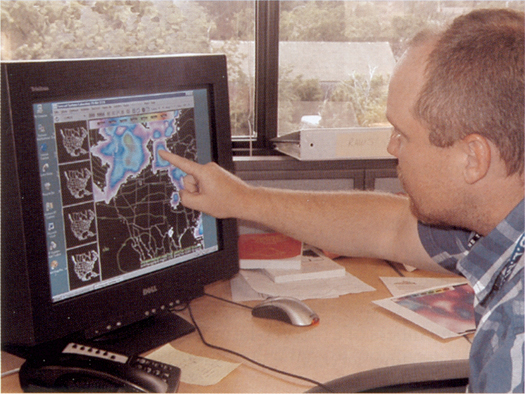
Figure 70. Fire weather forecaster using the FX-Net workstation at the Geographic Area Coordination Center (GACC) in Lakewood, Colorado.
Software Development – Major milestones were met with the completion of FX-Net version 3.0, released in May 2001, and with version 3.1beta,
completed in November 2001. Version 3.0 presented a new direction for the FX-Net: instead of a specific WFO localization, FX-Net focused on a nonlocalized
national display which included the 120+ WSR-88D radar sites located in the lower 48 states. A newly developed tool, the "Radar Chooser," allows users to
choose one of these radar sites and display radar products with any other product of similar scale. Other important new FX-Net features released in 2001 are
a cross-section tool, a point-height tool, and a model-sounding tool. In addition to these new client-side features, a lot of work was accomplished on the server
side. All existing FX-Net servers became members of a "server-farm," with two load balancers in front in order to distribute the product requests equally over
the existing servers.
FX-Net Applications – FX-Net is becoming a popular meteorological workstation for use in research and education, especially in universities.
Plymouth State College (PSC) in New Hampshire installed a special meteorological computer laboratory, with 20 FX-Net workstations and a data projector.
FX-Net is used extensively in an undergraduate meteorological laboratory class as well as more advanced classes. The Colorado State University (CSU) and
the University of Northern Iowa (UNI) also use FX-Net to support their meteorological curricula. FX-Net is also a primary tool for the UNI STORM project,
with special severe weather classes taught during the summer months.
Projections
Development of and improvement to FX-Net will continue during 2002, as follows.
- University and Research – The FX-Net team will continue to operate and maintain a system to support university meteorology classes and
meteorological research.
- Real-time Air Quality Forecast Workstation – Increasingly more products will be added to FX-Net during 2002 in support of its important
role in two major projects: the NOAA-funded AIRMAP project established to develop a detailed understanding of climate variability and the
source of persistent air pollutants in New England, and the High-Resolution Temperature and Air Quality Forecast Pilot Program (TAQ) with
the goal to improve the forecasting of temperature and air quality in the New England region.
- Fire Weather Forecasting – Many special products and features will be added to FX-Net, since it is the prospective primary meteorological
workstation to support the fire weather forecasters in all national GACC offices and the NIFC headquarters in Boise, Idaho.
- NWS Alaska and Pacific Region – FX-Net is under agreement to assist the Alaska and Pacific regions in acquiring real-time meteorological
products distributed to remotely located weather offices. During 2002, dedicated Alaska and Pacific regional data and FX-Net servers will be installed and
operable at FSL. These data and the FX-Net server will feature non-CONUS scale "localizations" that represent the Alaska and Pacific regions. The FX-Net
servers will be transferred later to the Alaska and Pacific Region Headquarters and support the FX-Net operations at these sites. Additional information on
the above FX-Net activities is available on the International Division homepage, http://www-id.fsl.noaa.gov.
Return to International Division Section
The Wavelet Data Compression Initiative
Renate Brümmer, Project Manager
Objectives
After successfully applying the wavelet data compression technique to satellite imagery, the Wavelet Data Compression initiative was established to further
investigate the possibility of using the technology for other meteorological datasets. Compared to imagery datasets, model datasets usually have higher
numbers of dimensions, but each dimension is of much smaller size. Therefore, special treatments are needed to exploit the correlation among all dimensions.
A multidimensional data arrangement and transform scheme have been developed to accommodate the special features of the model dataset. An experimental
encoder and decoder package has been implemented to test various datasets with different standard waves and different post-transform compression algorithms.
Accomplishments
Efforts in applying wavelet compression to gridded model data were expanded this year. Several new models were investigated with the focus on the difference
in compression factors for stationary and nonstationary fields. Stationary fields (such as upper-level temperature fields) are quite smooth in contrast to
nonstationary fields (vorticity or relative humidity). If "reasonable loss" in information is acceptable, stationary fields can be compressed two to ten times as
much as nonstationary fields. The larger the entire four-dimensional model grid (three dimensions in space plus one dimension in time), the higher the
compression factor which can be applied. Additional research was conducted on controlling the maximum or average error for each parameter. Work also
began on the development of a "zero-tree" algorithm to further improve the data compression performances, including compression ratio, error distribution,
and encoding time.
Projections
Plans for 2002 include the following:
- Studies on the "zero-tree" algorithm will be completed.
- Work on the preprocessing of datasets will continue. These preprocessing steps, along with the new quantification method, will help take advantage
of the correlation and further improve the compression technique.
- Special focus will be placed on the wavelet compression of gridded AWIPS model fields in order to support NWS' effort to reduce the current AWIPS
bandwidth. This will allow for the distribution of much higher resolution models, for example, the original full Eta 12-km model forecast run.
Return to International Division Section
The WorldWide Weather Workstation Initiative
Wayne Fischer, Project Manager
Objectives
The WorldWide Weather Workstation (W4) initiative is one of FSL’s latest developments utilizing WFO-Advanced workstation technology.
The primary objective is to design a system that will meet the forecasting needs of developing nations worldwide. Developing countries, of course, experience
the same types of natural disasters as occur elsewhere, but often lack the infrastructure available in modernized forecast offices, such as data communications,
local capability for operating numerical forecast models, and access to observations and data from surrounding areas. The advanced workstation technology
and varied datasets offered by the W4 system will help forecasters and emergency response managers in these countries better deal with hazardous
weather events, ultimately saving lives. The W4 system would first be made available to forecasters in various countries of Central and South America.
In studying the forecast situations and needs of developing countries, the design of the W4 system was based on the following considerations:
- Low capital and operating costs
- Ease of installation and maintenance
- Portability (installation in remote areas for short-term operation)
- Flexibility (modification of forecast products and addition of local data products at the forecast site).
Both the server and user subsystems utilize PC Linux platforms, substantially decreasing system capital costs from earlier Unix systems while providing
high-level system performance. Data will be sent to the W4 workstation using a highly compressed data stream broadcast satellite, likely using Very
Small Aperture Terminal (VSAT) technology. Data compression techniques, particularly wavelet transform compression, applied to satellite imagery and
gridded numerical weather prediction model datasets will allow the transmission of a full set of forecast data over a 128-kbps satellite link. The compression
techniques used will allow full datasets to be sent at significantly lower system operating costs.
Users of the W4 system will have access to a wide range of data, including full resolution geostationary satellite data from all channels, full
resolution numerical weather prediction data from various forecast models [initially two models will be used, likely the Medium-Range Forecast (MRF)
and the Aviation (AVN) models], all internationally available observation data (such as surface observations, ship and buoy reports, upper-air soundings,
and aircraft reports), and local observations added to the transmitted W4 datasets at local user locations.
The W4 system will use a series of nested scales, as is done in AWIPS, providing display products to the forecaster compatible with the size
and type of weather features being studied. Important workstation features will be available, such as roam and zoom, predefined procedures (sets of
forecast products designed for a specific type of storm), family graphics, and toggle capabilities for displayed products.
Accomplishments
Over the last year, implementation studies and development of the W4 system have been directed toward system configuration, datasets and
forecast products, and data compression.
System Configuration – The W4 system has four major components: the W4 server, the satellite broadcast system, the
user satellite ground station, and the forecaster workstation. (The W4 user interface is shown in Figure 71.) A significant investment is required
in establishing the W4 capability and implementing the server and satellite broadcast system to disseminate the forecast information. The user
satellite ground station and the forecaster workstation are comparatively inexpensive. Thus, the system will be economically viable with hundreds of users
to share the larger centralized costs of the W4 server and the satellite broadcast system. Design studies indicate that the commonly used VSAT
technology provides the required quality and reliable performance at comparatively low cost.
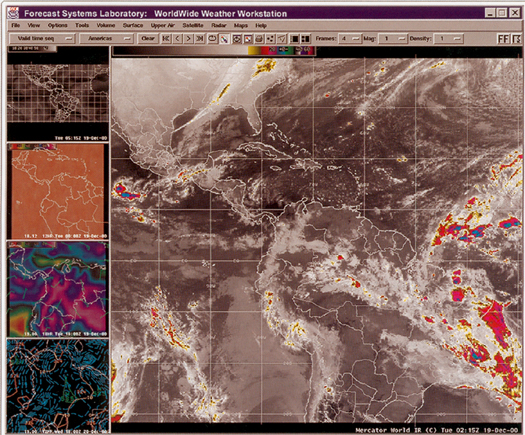
Figure 71. WorldWide Weather Workstation user interface.
The target workstation platform is a PC with Dual 1 GHz Pentium III processors with 512 MB of memory, a Linux operating system, and a 21-inch color monitor.
Such a PC configuration is readily available anywhere in the world at the current moderate cost of under $4,000 from several manufacturers.
Datasets and Forecast Products – Forecast systems have been designed to either provide the forecaster with specific forecast products on request or
to provide full datasets, allowing particular forecast displays to be generated and displayed at the workstation. The W4 workstation concept is based
on providing a full set of meteorological data to a number of forecast users within the forecast region defined by the communication satellite broadcast footprint.
For such a system, the broadcast of full datasets is appropriate, and can provide forecasters with the capability to work with the full suite of meteorological data
available.
Data Compression – An important area of research within the International Division is the development of data compression techniques that can
compress large datasets before transmission, allowing the use of significantly smaller capacity data circuits. This work has focused on compression of numerical
weather prediction model datasets and on satellite imagery datasets. The wavelet transform compression techniques are fundamentally a lossy compression
technique. In fully understanding the use to which the data will be subjected and also carefully controlling the errors introduced by the compression, significant
savings can be made in the communication costs while maintaining the integrity of the data for their intended use. Additional information is provided on data
compression in the two previous sections of this report.
An analysis of costs associated with satellite broadcast showed that 128-kbps is a reasonable cost/performance capability. Design studies show that a 128-kbps
capacity will allow a full set of products required for synoptic and meso-alpha-scale forecasting to be efficiently broadcast to a large number of forecast offices.
A prototype test of the W4 server and forecaster workstation using an Internet link to simulate the satellite broadcast was made at the American
Meteorological Society annual meeting. The W4 concept, the data compression techniques, server functions, and workstation capabilities were
demonstrated with a real-time data feed of critical datasets, particularly numerical weather prediction model and satellite image datasets. The results generated
considerable interest among potential users.
Projections
By the end of the 2002, plans are to have a full-scale prototype of the W4 system ready for demonstration. A national weather service forecast
center in a Latin American country should be identified as a test site, and a full satellite broadcast capability established for forecasters there. Each of the data
types intended for the system will be fully tested, and forecasters at the center will be given an opportunity to evaluate the W4 prototype and provide
input on system improvements.
The International Division's strategy toward operational use of W4 in developing countries is to, first, establish partnerships with weather services
in countries in Central and South America. FSL will work in cooperation with interested Latin American countries, with other U.S. government agencies, and
with international organizations to provide financial assistance for the implementation of W4 in these countries. Second, the division will seek to
identify private sector partners to team with FSL in implementing W4 worldwide. Private sector partnerships are envisioned to carry out day-to-day
operational and maintenance of W4 beyond what a research laboratory can provide. Private sector partners will be sought that are skilled in the
operation of an operational data/satellite-broadcast center, and in meeting the system support needs of the forecast users of W4 in the Latin American
countries.
We also recognize that many companies do provide support to weather services in developing nations, and we see the W4 system as an attractive
complement or upgrade to existing capabilities offered by these organizations. Allowing private sector partners to offer the W4 system to weather
services in these countries would provide an alternative to the government-to-government style of cooperation that FSL has begun with a number of weather
services around the world. We believe that government-to-government interaction will be appropriate in some countries, though private sector partners will
be more appropriate in others, such as is planned for the W4 system.
Return to International Division Section
|

|











